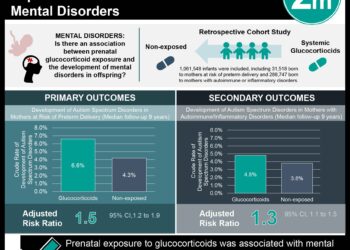Wellness Check: Addictions
2 Minute Medicine is pleased to announce that we are launching Wellness Check, a new series dedicated to exploring new research evidence focused on wellness. Each week, we will report on articles examining different aspects of wellness, including (but not limited to) nutrition, sleep, reproductive health, substance use and mental health. This week, we explore the latest evidence-based updates in addictions.
Telehealth may increase access to substance use treatment during COVID-19
1. Telehealth visits may be beneficial to patients with opioid use disorders, especially during the COVID-19 pandemic.
2. Certain patients, such as older adults, may be more likely to use telephone visits, while others, such as those with higher education, are more likely to use video visits.
Evidence Rating Level: 3 (Average)
The COVID-19 pandemic has been particularly difficult for those battling addiction. From lack of support groups to difficulty obtaining healthcare, many of these individuals have struggled. In recognition of this issue, restrictions on the use of telemedicine to treat individuals with opioid use disorder (OUD), were relaxed. The potential benefits of telemedicine include increased access to care and improved quality of interactions. The purpose of this study was to identify patient characteristics who used phone versus video-based telehealth care.
This study used data from the Respectful Equitable Access to Compassionate Healthcare (REACH) Medical group, which is a harm-reduction practice located in Ithaca, New York, United States. REACH implemented telemedicine via both phone and video in March 2020. Patients diagnosed with OUD who visited REACH Medical between March-December 2020 were included (N=795 patients, 4557 telemedicine visits). Sociodemographic information, quality of life, infectious disease history, substance use history, and questions pertaining to stigma were collected.
The results show that most encounters completed by patients (79.62%) were video visits. Notably, elder patients and patients who were less educated (who also experience a digital divide disproportionately) were more likely to rely on a telephone. Other factors included unstable housing, mobility issues, and unemployment. Furthermore, there were no differences between follow-up rates between the 2 groups. However, this study was limited in that data was collected from a single clinic from a sample of predominantly young, white individuals. Nonetheless, this study suggests that both video and telephone telehealth visits may be helpful in access treatment for OUD, though patient characteristics of each group may slightly differ.
Kratom use disorder and withdrawal may be common in the United States
1. Preliminary data from a convenience sample of kratom users noted that current kratom use disorder was detected in approximately one third of respondents.
2. Kratom withdrawal was also common reported, indicating that clinicians should be aware of the condition.
Evidence Rating Level: 3 (Average)
Kratom is a tree found in Southeast Asia. Kratom leaves contain a multitude of bioactive compounds, some of which have opioid activity. Many people use kratom to self-medicate for chronic pain, substance use disorder, psychiatric, or other conditions. However, kratom use is not typically asked about in clinical environments and is not well understood. The purpose of this study was to identify clinical characteristics of those who experience kratom use disorder (KUD) as well as withdrawal symptoms.
This study used a convenience sample from a larger online survey conducted between April 15-May 15, 2021 using Amazon Mechanical Turk (an online crowd sourcing platform). Only patients who reported kratom use from this survey were included (N=129, 44.6% response rate). Each of these individuals were re-contacted for researchers to gather further information. Patients who did not follow-up were excluded. Outcome variables included any information pertaining to KUD, comorbidities, and other demographic information.
The results show that among respondents who has used kratom, approximately one third met DSM-derived criteria for KUD. Many individuals reported continued use due to tolerance and withdrawal. Interestingly, most individuals did not report that kratom use impaired their psychosocial or occupational functioning. However, this study did have several limitations, including its use of a convenience sample and its small sample size, which may not be generalizable to larger populations. Nonetheless, this study was significant in suggesting that KUD may be common among those who use kratom, and that clinicians and other healthcare professionals should be made aware of its prevalence.
1. This study found minorities are diagnosed with opioid use disorder on average 37 days later than non-Hispanic white women during pregnancy.
2. Other factors contributing to disparities in receipt of medications for opioid use disorder may include healthcare access and quality, as well as community factors.
Evidence Rating Level: 2 (Good)
Opioid use disorder (OUD) can have adverse effects on both material and fetal well-being. Current guidelines suggest that medications for opioid use disorder (MOUD) such as methadone and buprenorphine should be given both during pregnancy and the postpartum period. Previous research has suggested that Black and Hispanic women are less likely to receive MOUD as compared to non-Hispanic white women. However, it is currently unknown what factors contribute to this concerning disparity.
This retrospective cohort study examined individual, healthcare quality and access, and community factors amongst Medicaid-enrolled women from Pennsylvania Medicaid. Only women who had a live birth from October 1, 2011 to September 30, 2017 and had a diagnosis of OUD were included (n=11,521 women with 13,320 total deliveries). Patients were excluded for any missing data or lack of follow-up at 12 weeks. Primary outcomes assessed: 1) any MOUD during pregnancy and 2) any MOUD received 12 weeks postpartum. Other secondary outcomes included various individual-level factors, healthcare access and quality factors, and community factors (such as unemployment rates).
The results show that among Medicaid-enrolled women with OUD during pregnancy, non-White/Hispanic women had significantly lower usage of MOUD, both during pregnancy and postpartum. The study also finds that healthcare access and community factors explain a larger percentage of this disparity than individual factors. The timing of diagnosis of OUD was also significantly earlier for white women. This suggests the importance of early screening. This study did have several limitations, including its sample population being limited to the state of Pennsylvania and lack of extensive comorbidity data in these women. Despite these limitations, this study suggests that universal substance use screening in pregnant women and improving healthcare access may close the racial-ethic gap in MOUD use.
Image: PD
©2022 2 Minute Medicine, Inc. All rights reserved. No works may be reproduced without expressed written consent from 2 Minute Medicine, Inc. Inquire about licensing here. No article should be construed as medical advice and is not intended as such by the authors or by 2 Minute Medicine, Inc.


![siRNA against antithrombin alleviates symptoms of hemophilia [PreClinical]](https://www.2minutemedicine.com/wp-content/uploads/2015/04/clot-CCWiki-350x250.jpg)




